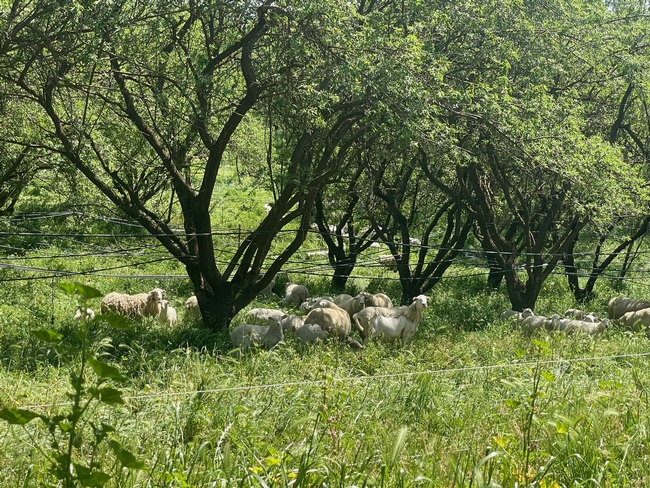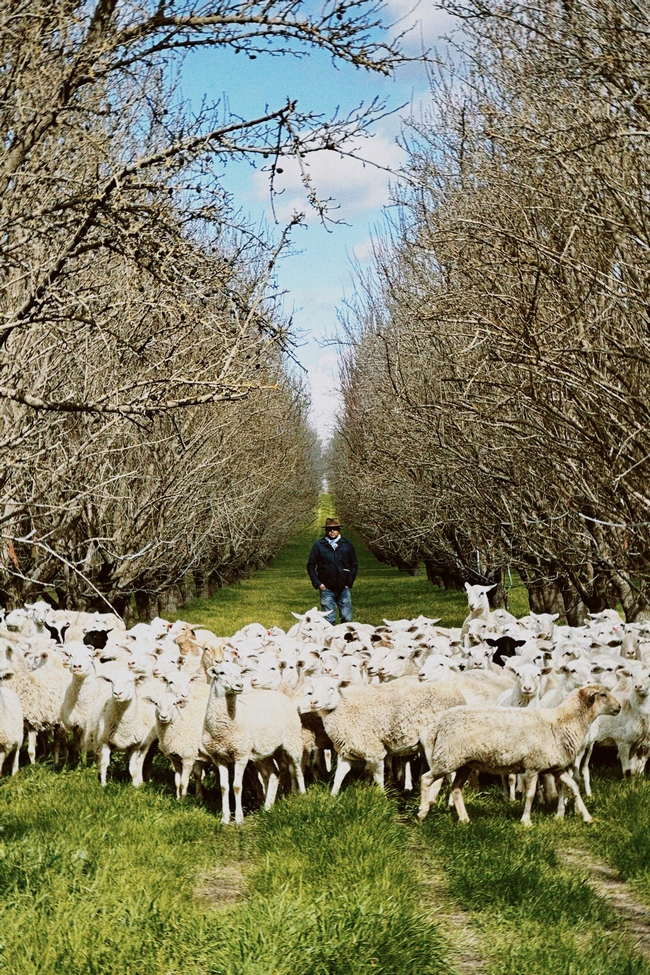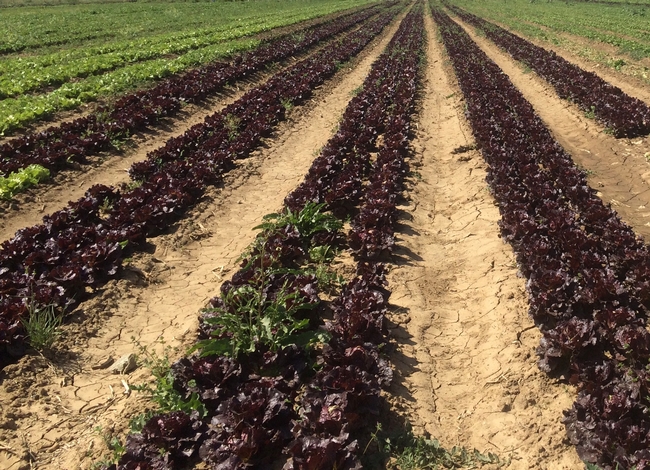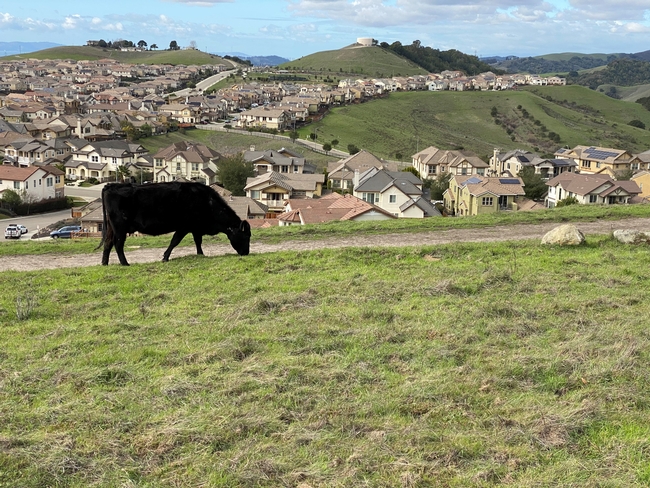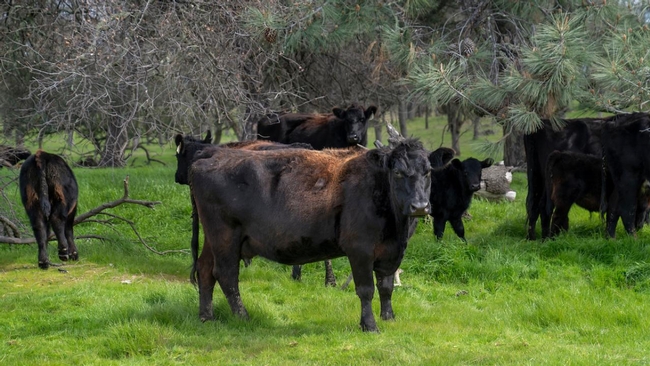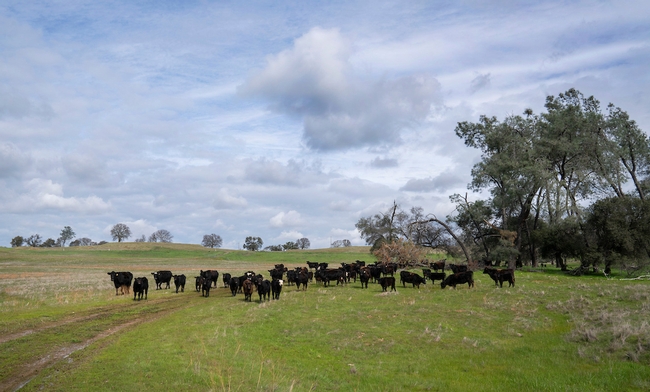Posts Tagged: grazing
USDA awards $2 million to study livestock grazing in organic orchards
UC, The Organic Center, University of Rhode Island partner on $3.5m food-safety study for organic produce growers
Grazing sheep and other livestock can help convert cover crops to fertilizer for orchard crops. To develop best management practices, the University of California and The Organic Center are collaborating on research to help organic orchard growers safely incorporate livestock grazing into their farming practices. The project is funded by a $2 million grant recently awarded through the U.S. Department of Agriculture's Organic Agriculture Research and Extension Initiative research program.
Interest in grazing livestock on cover crops in nut orchards has increased in recent years. However, research is needed to determine the best way to improve soil health and pest suppression, and to address concerns about food-borne pathogens and food safety.
“Organic farmers typically follow the USDA National Organic Program standards for raw animal manure, waiting 90 to 120 days between incorporating raw manure into the soil and harvesting the crop,” said Alda Pires, UC Cooperative Extension urban agriculture and food safety specialist in the School of Veterinary Medicine at UC Davis.
“Little research has been conducted to verify adequate waiting periods to reduce contamination risks in integrated crop-livestock production systems,” she said. “This research will fill the knowledge gap and facilitate the development of science-based food safety guidelines for grazing small ruminants in orchards.”
For this four-year project, “Influence of Orchard Grazing on Soil Health and Pest Control While Mitigating Food Safety Risk,” the scientists will study organic almond, walnut and pistachio orchards in two distinct nut-growing regions in California – the Sacramento Valley and San Joaquin Valley. The scientists will assess the effects of livestock grazing of cover crops on bacteria populations, soil health, pest control and economics.
Building soil health
“Growers have consistently raised the need for more information on grazing impacts on nutrient availability during tree growth, as well as potential to build up the biological, physical and chemical pillars of soil health,” said Amelie Gaudin, associate professor and endowed chair of agroecology in the UC Davis Department of Plant Sciences.
Livestock grazing may provide an opportunity to quickly enhance the amount of nitrogen that can be used by plants and microbes when the cover crop is terminated. “This project will help growers develop nitrogen budgets for these more diversified systems and quantify additional benefits and potential tradeoffs for soil health – such as compaction and salinity – to guide the development of place-based best management practices,” Gaudin said.
Pest management
Houston Wilson, UC Cooperative Extension specialist in the Department of Entomology at UC Riverside, will be studying the effects of livestock grazing on orchard pests.
“Navel orangeworm, or NOW, is by far the most destructive pest of almonds and pistachios,” Wilson said. “These moths overwinter in unharvested nuts in the orchard, and so removal and destruction of remnant nuts over the winter is the foundation of NOW control. While farmers typically use machinery to do this, grazing with animals may present a unique alternative that is more cost-effective and provides additional ecosystem benefits, such as soil health and weed control.”
Outreach to farmers
As part of the project, The Organic Center was awarded $75,000 to work with UC Agriculture and Natural Resources to direct national extension and education outreach activities. These will include a social media campaign, webinars and educational sessions and a technical report for growers.
“There is an increasing interest from organic farmers to learn how to incorporate livestock into their operations to gain better soil health and fertility,” said Amber Sciligo, director of science programs at The Organic Center.
“This research is very exciting because it will holistically explore the potential risks and benefits of livestock not just to soil health, but also pest control – a truly interdisciplinary project that matches the whole system of the organic farm.”
Produce food-safety management tools
For another organic food-safety project, Pires and Sciligo will be working with Patrick Baur, professor of Sustainable Agriculture and Food Systems at the University of Rhode Island.
The University of Rhode Island and The Organic Center received $3.5 million from USDA's Organic Agriculture Research and Extension Initiative research program for the new organic food-safety education project.
“We're going to develop a new food safety management tool designed specifically for organic soil amendments,” said Baur, who is leading the project. “We're also going to develop a suite of new communication and training tools aimed at the entire fruit and vegetable sector to build a shared language between organic agriculture and the food safety community and help them work better together.”
As part of the produce project, Pires of UC Davis was awarded $1.16 million to conduct a risk assessment and create a publicly accessible dashboard to meet the specific needs of organic growers operating at different scales, under different cropping systems, in different regions.
Also participating in this project will be Beatriz Martinez Lopez, professor in the School of Veterinary Medicine at UC Davis, and Abhinav Mishra and Govindaraj Dev Kumar of the University of Georgia.
New UC ANR publication educates public on cycles of cattle production, grazing and economics
The pandemic has brought more people into nearby parks and public lands for hiking, biking and other recreational activities. In areas like the East Bay Regional Parks – a San Francisco Bay Area park system totaling more than 120,000 acres where about 65% of the land is grazed by livestock – visitors might see goats, sheep and, most likely, cattle.
Those encounters with animals (or their manure) represent a prime opportunity for members of the public to learn about agriculture and the ecological benefits of rangelands, according to Larry Forero, a UC Cooperative Extension livestock and natural resources advisor.
As livestock grazing (mostly by beef cattle) constitutes a significant portion of land use across the state, Forero – along with fellow UCCE advisors Sheila Barry and Stephanie Larson – recently authored a UC Agriculture and Natural Resources publication summarizing the mechanics of cattle production.
“Beef Cattle on California Annual Grasslands: Production Cycle and Economics,” published in October and available as a free download on the UC ANR Catalog, describes the seasonal phases of cattle production and the factors that impact ranchers' financial calculations and management decisions.
“This concise publication walks through annual stock flows and calendar of operations and gives tables for estimating costs, return over cash, and gross income under various scenarios,” said Forero.
“Even if only a relatively small percentage of park goers are interested, you still touch a lot of people with a document like this,” Forero explained.
He said he hopes park signage and QR codes will direct visitors to the publication for more information about the cattle and their seasonal movements.
“People often wonder where the cattle go when they leave the park and when they will return,” co-author Sheila Barry said. “The cattle may go to grass or feed yards in other places in California or even out of state.”
But, as this new UC ANR publication explains, the cattle production cycle turns over anew.
“There will be more cattle next fall, I promise,” Barry said.
California’s local meat suppliers struggle to stay in business
UC Davis report suggests ways to build resilience
The University of California, Davis, Food Systems Lab has released a white paper showing the need to support California's small and mid-scale meat suppliers and processors in order to build a more resilient meat supply chain. It describes how the meat supply chain and rural economies could benefit from regulatory changes and more collaboration among producers and other stakeholders in the system.
The pandemic shut down meat processing plants in 2020, as did recent ransomware attacks on JBS, the nation's largest meat supplier. Report authors said this highlights the need to support small- and mid-scale suppliers.
“COVID and the ransomware attacks put a spotlight on how the concentration of the meat supply chain increased vulnerability in the food system,” said report co-author Tom Tomich, founder of the UC Davis Food Systems Lab and distinguished professor in the Department of Environmental Science and Policy. “We need to level the playing field so small- and mid-scale farms have an easier way to bring their product to market.”
The report says the lack of access to slaughter facilities, limited capacity of cut and wrap facilities, and concentration of marketing channels create conditions in which small- and mid-scale farms and ranches struggle to stay in business.
“These challenges are exacerbated by policies that tilt the playing field against small operators. Fortunately, new state and national legislation and programs are developing that could increase resilience in our food systems,” says Michael R. Dimock, Roots of Change program director and lead author for the report. “We need cities and counties to help fix the problems because local land use policies often impede development of resilient supply chains.”
Lack of access and limited capacity
Smaller ranchers in California have limited access to slaughter and processing facilities. In the last 50 years, California has lost half of its federally inspected meat processing plants, and the remaining facilities are unable to meet demand. Many of the 46 USDA-certified slaughter plants operating in California are closed to smaller producers.
“This means that smaller ranchers must drive hundreds of miles to reach a facility or have to wait months due to limited capacity,” said Tomich.
The report said a combination of federal, state and private investments could provide a broader geographic distribution of plants of differing scales. It also suggests expanding mobile, on-farm slaughter operations for sheep, goats and hogs, similar to those for beef.
Regulatory barriers and opportunities
Complex inspection requirements and other regulatory barriers make it difficult for small- and mid-scale producers to compete with big suppliers. The report suggests California create its own meat inspection program equivalent to the federal program to serve smaller ranchers. Prioritizing public procurement of local, high-value meat would also help expand market access for smaller producers.
Broader benefits of smaller operators
The report notes other beneficial roles of small- and mid-scale livestock operations, apart from the potential to increase resilience in our food system. Livestock grazing is a cheap and effective way to reduce wildfire risk. Supporting local meat processing also helps rural economies and creates community-based jobs.
The report was based on 27 interviews with people representing a wide spectrum of activities and points of view within the meat supply chain throughout the state. Authors are Courtney Riggle, Allan Hollander, Patrick Huber and Thomas Tomich of the UC Davis Food Systems Lab, and Michael R. Dimock with Roots of Change.
Funding for the study came from the TomKat Foundation and USDA Hatch Program.


